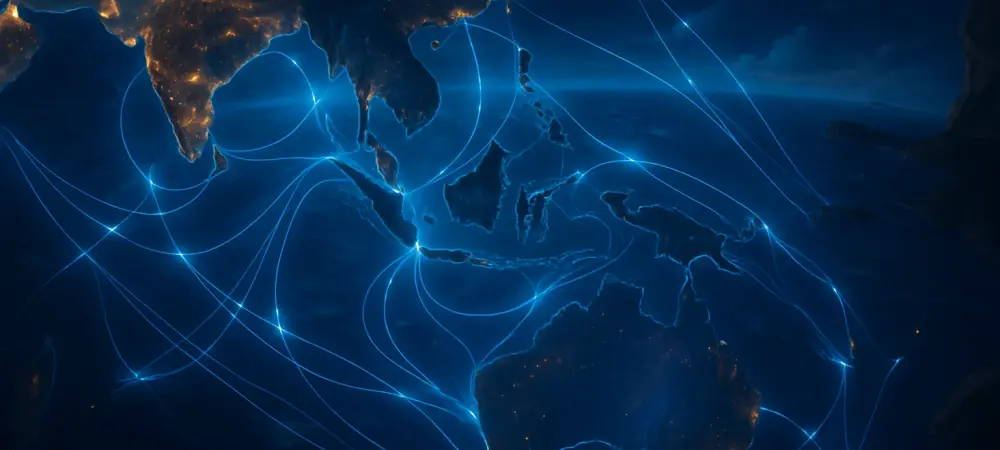In an era where digital transformation dictates the pace of economic and technological growth, the Indian Ocean region stands at a critical juncture, grappling with the urgent need for robust internet infrastructure to support burgeoning demands. With millions of users and businesses increasingly reliant on AI-driven solutions and cloud-based services, the disparity in connectivity across this vast area has become a pressing challenge. Google’s latest announcement of the Dhivaru subsea cable system offers a promising solution, aiming to bridge these gaps by linking key locations such as the Maldives, Christmas Island, and Oman. This ambitious project extends the reach of existing digital frameworks, promising not only to enhance reliability but also to pave the way for unprecedented access to cutting-edge technologies. As digital demands soar, this initiative could redefine how regions interact and thrive in a hyper-connected world, setting the stage for a deeper exploration of its impact.
Transforming Regional Infrastructure
Strategic Connectivity Through Key Hubs
The introduction of the Dhivaru subsea cable system marks a significant leap forward in addressing the connectivity challenges faced by the Indian Ocean region. By establishing two pivotal hubs in the Maldives and Christmas Island, this project creates vital interconnection points that link Africa, the Middle East, South Asia, and Oceania. These hubs are more than just physical locations; they serve as the backbone for advanced digital interactions by facilitating seamless data exchange across continents. Their strategic positioning ensures that data traffic can be managed efficiently, reducing bottlenecks and enhancing the overall user experience. Beyond mere connectivity, these hubs are engineered to support cable switching, which allows for rapid rerouting of data in the event of disruptions, ensuring continuity and resilience. This infrastructure is poised to transform how regional and global networks operate, catering to the escalating needs of both individual users and enterprise clients who depend on stable internet access for their operations.
Enhancing Performance with Advanced Features
Beyond establishing physical connectivity, the hubs introduced by the Dhivaru system are designed to optimize digital performance through innovative functionalities. Content caching stands out as a critical feature, enabling the storage of frequently accessed data locally to minimize latency and speed up access times for users across the region. This is particularly beneficial for streaming services and other high-bandwidth applications that dominate modern internet usage. Additionally, the provision of colocation services within these hubs offers carriers and local businesses access to essential rack space in areas where data center options are scarce. This capability empowers smaller enterprises to deploy services without the prohibitive costs of building their own infrastructure. Together, these features create a robust ecosystem that not only supports current digital demands but also anticipates future growth, ensuring that the region remains competitive in a rapidly evolving technological landscape.
Prioritizing Sustainability and Resilience
Energy Efficiency in Digital Expansion
A cornerstone of the Dhivaru initiative is its commitment to sustainability, particularly in the operation of subsea cables and connectivity hubs. These facilities are designed to consume significantly less power compared to traditional data centers, even when managing multiple cables and localized storage systems. This focus on energy efficiency is crucial in smaller regions where power resources can be limited, ensuring that digital expansion does not come at the expense of environmental or economic strain. Google’s leadership has emphasized that these hubs prioritize networking over the intensive computational demands typically associated with AI or cloud services, further reducing their energy footprint. By integrating such considerations into the core design, the project sets a precedent for how digital infrastructure can grow responsibly, balancing technological advancement with the imperative to protect local ecosystems and resources.
Partnerships for Sustainable Energy Solutions
Recognizing that even energy-efficient systems require substantial power in certain contexts, Google is actively exploring collaborations to drive investment in sustainable energy solutions for the Dhivaru project. The aim is to support the power needs of connectivity hubs through renewable sources, aligning with broader goals of environmental stewardship. Such partnerships could stimulate local economies by fostering the development of clean energy infrastructure, creating jobs, and reducing dependency on non-renewable resources. This approach not only addresses the immediate operational needs of the hubs but also contributes to long-term regional sustainability. By embedding these principles into the project, the initiative demonstrates a forward-thinking strategy that could serve as a model for other global digital infrastructure projects, ensuring that technological progress and environmental responsibility go hand in hand.
Charting the Path Forward
Reflecting on a Groundbreaking Effort
Looking back, the rollout of the Dhivaru subsea cable system emerged as a transformative step in enhancing digital connectivity across the Indian Ocean region. Its strategic hubs in the Maldives and Christmas Island solidified critical links between diverse continents, ensuring that data flowed seamlessly even in the face of potential disruptions. The integration of advanced features like content caching and colocation addressed immediate performance needs, while the emphasis on energy efficiency highlighted a commitment to sustainable growth. These efforts collectively tackled the pressing connectivity disparities that once hindered technological progress in the area, laying a robust foundation for both current and emerging digital demands.
Envisioning Future Collaborations
Moving ahead, the focus should shift toward scaling the impact of such initiatives through broader collaborations and innovative strategies. Stakeholders across the region could explore joint ventures to expand the network of sustainable energy solutions, ensuring that power demands are met without compromising environmental goals. Additionally, investing in local talent and infrastructure will be key to maintaining the momentum of digital growth, empowering communities to fully leverage the enhanced connectivity. As technology continues to evolve, adapting the Dhivaru framework to incorporate emerging tools and practices will ensure its relevance, fostering a resilient digital ecosystem that benefits users and businesses alike for years to come.

